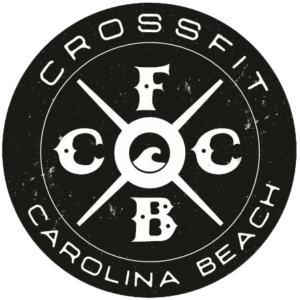What Do I Eat In Day?
And why should you care?
This article will detail what I eat.
The truth is, you probably shouldn’t care what I eat in a day, but I’m using my example(I know it well) to paint some other ideas.
LLEetttt’sssss GGGgggooooo
For me, at this point in my life(and I’m not sure why), I am performance focused. My performance, since I love all fitness domains, is strength, endurance, and cognitively focused.
So what does that mean?
I mish-mash a lot of different ideas together in something that is probably doing too much at once, but, it works for me, it gives me peace of mind, and also meets my needs.
Please note: If you are reading this, this is purely informative of my current habits. This is also part of a bigger series of posts on diet and goal setting.
The purpose of this post is to paint an example in a broader context. This article will be hyperlinked in a few upcoming articles that have some complexity, so this article offers explanations to some of those complexities while not taking away from the simplicity of the posts.
So what you do, bro?
I practice Time Restricted Eating(TRE, sometimes known as TRF(The F is for feeding instead of eating)), but I eat a lot.
What’s that?
TRE differs from intermittent fasting(IF), only by that IF has no definition on time limit.
Someone on an IF diet could go 2 hours without eating, or 10 days.
TRE refers to eating every day, but only within certain times of the day. The reasoning for TRE is based on a lot of research around the circadian rhythm(which influences your entire existence). You can read about it here: The Critical Importance of Time-Restricted Feeding in Weight Loss or if you are more of a listener, this amazing piece is worth every second of your time: Dr. Satchin Panda on Practical Implementation of Time-Restricted Eating & Shift Work Strategies.
So now that we have officially glazed over entire volumes of encyclopedias of information on health and diet, let us take a look into what I eat and why. (This is not a recommendation for you and should not be interpreted as health advice; only as inspiration for the idea that there is more to know out there.)
So, TRE; what else?
Next, I eat a lot.
Compared to Hafthor Bjornsson’s 10,000 calories a day or Dwayne “The Rock” Johnson’s 5,470 calories a day I do not eat a lot, but compared to the average American I do.
If you are not fully aware of what eating a lot looks like, here you go (disclaimer; just assume it’s organic, free range, grass fed, wild caught. I would love to type organic, free range, grass fed, wild caught for you 100 times but let’s just assume it is.)
Protein: 150-180g
Carbs: 150-350g
Fat: 75-115g
Calories=1,875-3,155
Ranges are based on time of year, training focus, and whether or not I just need a break from eating. As a reference point, my weight is in flux from 170lb’s(77kg) to 180lb’s(82kg) throughout the year. I’ve got up to 191lb’s(87kg) but I found it so hard to maintain and uncomfortable. I’m 5’7” and come from a small family(my mom is 4’10”) so staying big may not be in the cards.
Daily Break Down:
Morning Routine: I make a little drink concoction that has protein and fat.
I’m not going to explain the debate of why some marketing genius was able to market putting butter in coffee, and how this could be a silly waste of your precious fats.
I will say, however, that insulin production is known to inhibit cognition, and also that I wake up straight hungry hungry hippo. This drink works well for sippy sippy satisfaction, and also satiety. I do my creative work in the morning, so no carbs is great for a few hours for me.
Also, your body is empty, so digesting fats can be an easier and more thorough task. You may be able to more easily extract all nutrition from fat without the addition of aminos from protein to break down, or fats sliding through attached to fibers from complex carbs.
So, who knows if I actually focus better or not, but it gives me peace of mind, yo. Peace of mind.
Also, if you are not up to date on L-Theanine, found naturally in green tea, click that link and read.
Morning Routine Drink
Four Sigmatic Matcha Mushroom Mix=3g
Thrive Market Collagen Peptides=2 scoops
Coconut Oil=1 tbs
Chocolate=¼ serving
I don’t blend chocolate in the bev, but rather munch on it on the side, because chocolate is the bomb. Forgive the vagueness here, but the quantity chocolate is enough to make me smile, and not enough to make me feel like a glutton.
Protein=20.8g
Carbs=5g
Fat=18.2g
Snack 1: at 9:00 am every day. AB&J, baby.
I’m not totally sure why I care so much about my athletic performance, but I’ve found that an AB&J(almond butter and jelly) can give me a lot of cals, and be fully digested by workout time(for me 11:30 or 12:00). I am one of those weirdos that has to wait like 4 hours after he eats to workout or it’s a quick trip to vom-city. If you’ve never been there, I very much don’t recommend it.
And it’s not limited just the fear of vomiting. In general, if I eat too soon, my workout sucks.
Heavy squats with burp chest?
50burpee box jump overs for time with bloat stomach?
Good luck impressing anyone, or even being able to put in an intense of enough an effort to actually get better at anything. If you move slow, you adapt slow. If you need to get more out of your workout, try being a little empty in the stomach; it’s liberating.
Eating before a workout doesn’t bother you? No problem; you do you. There is a bit of an argument to be made that blood may be focused on digestion and your digestive system is pulling blood and keeping it from your extremities.
Heavy bench press or wide grip pull ups today? Maybe you can get a little more on an empty stomach.
This is a lot longer of a convo for another day, but we’ve listed a few things to think about and experiment.
This whole thing is an experiment; don’t forget it.
Play around. Try new things. Find out what works. Then try something else out a year later.
Dogma=bad.
Experimentation(not on game day)=good.
Snack 2: Post workout
Banana=1 whole
Fitaid=1 can.
I don’t deny nor promote the awesomeness that is described on the label of a can of fit aid, but it tastes delicious, and fast acting carbs.
Protein=1.1g
Carbs=34g
Fat=.3g
Breakfast: Around 1:00pm
A few things to keep in mind; I am also one of those weirdos who doesn’t really eat until later in the day. I have my morning routine and my AB&J. I workout during lunch break.
For the sake of this convo, understand that I’m thinking fast acting carbs post workout, then, fats for hormones, and protein, ‘cause gains.
The argument against fats immediately post workout is because it slows down the digestion processes, and keeps you from having protein/carbs in the “anabolic window of gains.”
This “window”, many folks believe, is within the first-hour post workout. Muscles are more insulin sensitive, insulin growth hormone 1(IGF1) is available, and gains happen.
Research shows that there is no “anabolic window of gains” Here is a great article on the overview of literature for practical application and here is the original study conducted by the researcher on muscle hypertrophy, Brad Schoenfeld, Ph.D., CSCS, CPT. The idea is that if you have enough protein and carbs throughout the day, every day, then you have no need to supplement, or observe the “window”.
Also, a great discussion on the trade-off between performance and longevity, as well as IGF1, pituitary and liver function is in a short video, here.
I eat the Snack 2 to get some carbs in(even though research shows it may not matter too much).
Why? Because it tastes good and keeps me from shaking after hard workouts(blood sugar drop). Once I get over my performance focus, I will probably never suffer from post workout shaking(a symptom of low blood sugar) because my body will be more adapted to fat as fuel and not need as many carbs. This happens very rarely for me. (45-minute EMOM, anyone?)
That, my friends, is a different encyclopedia of information for another day.
Then onto some whole foods with breakfast, usually within 20-60minutes of workout.
So why the quick oats vs whole or steel cut? Because I like quick oats. They may not be as good for you as steel cut oats, but they make zero mess in the microwave and I overboil all the other oatmeals every time.
Sure, I could get a bigger bowl, but I’m just not there yet.
Breakfast: Around 1:00pm
Oatmeal=60g
Eggs=3 large
Bacon=0-2 slices(depends on the time of year and if cutting)
Protein=21.3g
Carbs=43.6g
Fat=30.8g
Lunch: Around 3:00pm
I would love to eat lunch out every day. I really would.
There is a lot of reason not too and lunch is the hardest for me to skip for a few reasons. The biggest reason is that of value versus flavor. If you go have an awesome dinner and pay for the experience, that is awesome, but lunch is where you can pay for the food AND get enough to eat.
Awesome lunch, awesome price, and enough food for the price.
Lunch out is just awesome. This is also, for the same reasons, the easiest place for the wheels to come off track.
Work provides lunch a couple days a week? Long lunch break and your co-worker is having a life crisis and you need to console over the towns best burger?
Again, it is so easy to come off the hinges at lunch. Hold on to the reigns. If we can hold on through lunch then the rest of the day is cake.
Lunch: Around 3:00pm
White rice=1.5-2cups(depending on the season)
Roasted chicken=6 ounces
Kale=1cup
Chalula=No such thing as too much.
Protein=50g
Carbs=77.4g
Fat=2.8g
Dinner: Between 7:00 and9:30pm(day of week dependent)
Dinner is where I find a lot of variation. We will just outline 1 example, but understand breakfast, lunch, and snacks are often the same thing all week long, then dinner, for me, is where the variety comes in.
Beets=6-8ounces
Wild Salmon(sustainably sourced, of course)=6 ounces
Spring Mix=2 cups
Brocolli sprouts=1ounce
Red bell pepper=.5 cup
Trader Joe’s Green Goddess Dressing=1 serving
Avocado=4 ounces
Protein=31.5g
Carbs=33.3g
Fat=18.5g
In Conclusion:
This is a low time for calories(reflected by the math this is around 2,400cals for the day.) I did a 3-day competition 2 weekends back and my body has been craving a reset. That usually looks like a couple weeks of drastically reduced workout volume (37% which is conveniently 2 more days of) as well as drastically reduced calories until I feel light and springy(telling me my inflammation is down and I can handle some more stress for heavier weights in the weight room, as well as the stress from more eating.)
Eating more can help keep exercise stress down by aiding in recovery, but make no mistake, your body goes through a lot of stress in digesting what you eat. Seasonality is important to observe with this, hence, the lower content now.
Jordan Vance, M.B.A., PNL1
Jordan helps people reach their goals and break through massive barriers by making simple and easy to follow programs. He loves a great meal, a great coffee, and a great pint of something local. When he isn’t writing or walking his dog with his wife, he is either helping someone crush their goal, or creating a plan to help more goals be crushed.


